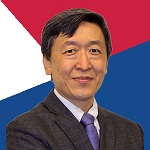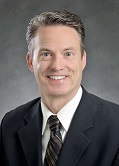IEEE Special Event on Antennas: The Structural Elements of EMC
Join us for a special IEEE Italy EMC Chapter Meeting with Invited Experts from Industry and Academia at the University of Rome, “La Sapienza” (Sala degli Affreschi). Our speakers have convened in Rome from the US and the UK to share their expertise with us. This meeting is open to IEEE members and non-members; kindly register in advance to attend.

MEETING SUMMARY: Our invited speakers will provide an overview of antenna designs, their fundamental parameters, and figures-of-merit. Since antennas are becoming increasingly important due to the continued rapid advances in wireless technology and autonomous vehicles, to name a few applications, an understanding of antenna behavior and performance is essential to efficiently design new products as well as correctly evaluate product performance. The following speakers will separately discuss the impact of many of the antenna fundamentals on the practical application of antennas, with an emphasis on modeling, measurements, and applications on test site evaluations. To conclude the meeting, attendees will learn about innovative and emerging antenna technologies for the modern world.
Our first presentation will be given by our keynote speaker, Professor Stuart Gregson, who will present "Application of Electromagnetic Simulation and Post Processing in Modern Antenna Metrology."
Abstract: Accurate and precise measurement is an indispensable constituent of research, design, and development with this being especially true in the field of modern electromagnetic and antenna systems. In this talk we shall consistently employ the concept of Computational Electromagnetic (CEM) simulation of the measurement and highlight the use of a range of simulation tools in the development of several varied antenna measurement techniques including evolutionary optimization of compact antenna test ranges for 5GNR applications, development and implementation of novel near-field to far-field (NF/FF) transformation techniques for industrial multi-axis and un-tethered drone measurements including examining novel phase recovery algorithms. The talk will show that these CEM models are not only used to develop, verify, and validate the measurement systems themselves, but they are also being harnessed to effectively test the underlying measurement techniques and post-processing algorithms where, crucially, individual error components may be conveniently, and precisely, examined.
Stuart Gregson has more than twenty five years of experience working in the space, aerospace and communications sectors and is currently Director of Operations and Research at Next Phase Measurements, and an honorary visiting professor in the School of Electronic Engineering and Computer Science at Queen Mary University of London. He received his BSc degree in Physics in 1994 and his MSc degree in Microwave Solid State Physics in 1995 both from the University of Portsmouth. He received his PhD degree in 2003 from Queen Mary University of London with near-field antenna measurements and statistical pattern recognition as his main subject areas. From his time with: Airbus, Leonardo, NSI-MI, and the National Physical Laboratory, Prof. Gregson has developed special experience with near-field antenna measurements, finite array mutual coupling, computational electromagnetics, installed antenna and radome performance prediction, compact antenna test range design & simulation, electromagnetic scattering, 5G OTA measurements and has published numerous peer-reviewed research papers on these topics regularly contributing to and organizing industrial courses on these subject areas. At the end of 2007 he was the lead author of the research text Principles of Planar Near-Field Antenna Measurements which is now in its 2nd edition, and in 2014 he co-authored a second text, Theory and Practice of Modern Antenna Range Measurements now also in its 2nd edition. He is a Fellow of the Antenna Measurement Techniques Association, a Fellow of the Institution of Engineering and Technology, a Fellow of the Institute of Physics and is a chartered Engineer and Physicist. In 2018, Prof. Gregson was elected to the to the AMTA Board of Directors where he served first as Treasurer, then as Vice President.
The next two presentations will be given by Distinguished Lecturers of the IEEE EMC Society, Zhong Chen and Dennis Lewis. You can read their presentation titles, abstracts and biographies below.
The event concludes with an interactive panel session with the speakers. Join us! Kindly register in advance.
For directions to the meeting venue, see:
https://web.uniroma1.it/dip_diet/en/dipdiet/department/how-reach-us
Date and Time
Location
Hosts
Registration
-
 Add Event to Calendar
Add Event to Calendar
- University of Rome, La Sapienza
- Via Eudossiana 18
- Rome, Lazio
- Italy
- Building: Main Engineering (Faculty) Building
- Room Number: Sala degli Affreschi
- Contact Event Hosts
-
Francesca Maradei
francesca.maradei
@uniroma1.it
+39 338 715 3656
Speakers
 Zhong Chen of ETS-Lindgren
Zhong Chen of ETS-Lindgren
Recent Advances in EMC Test Site Evaluation Using Advanced Antenna Measurement Techniques
Calibrating antennas and validating test sites are interdependent processes, as they both mandate accurate antenna measurements in their testing environment. Site VSWR, as specified in CISPR 16-1-4 or C63.25, is used as the figure of merit to qualify test site performance from 1 GHz to 18 GHz. In the CISPR method, the standing wave is measured by sampling scalar fields along several linear paths. However, in an effort to simplify the measurement, test data are severely undersampled. Time Domain SVSWR, as specified in C63.25.1 (1-18 GHz), was developed to address the undersampling issues. For above 18 GHz tests, new challenges emerge, such as the need to test more locations in the Quiet Zone (QZ) and to measure the receive antenna beam coverage. Cylindrical Mode Filtered SVSWR developed as a result, which is now under active consideration in the C63.25.3 (18-40 GHz) and CISPR 16 standards. Participants of the seminar will gain a deeper understanding on technical background (the whats and whys) of the evolution of the test methods, and how advanced antenna measurement techniques are used to help to solve the different technical challenges.
Biography:
Zhong Chen is the Director of RF Engineering with ETS-Lindgren, located in Cedar Park, Texas. He has over 25 years of experience in RF testing, anechoic chamber design, as well as antenna and EMC field probe design and measurements. He is a past member of the Antenna Measurement Techniques Association (AMTA) Board of Directors and is currently a member of the IEEE EMC Society Board of Directors. Mr. Chen is the Chair of Subcommittee 1 of ANSC C63, which is responsible for EMC antenna calibration and test site validation standards. He is also chair of the IEEE Standard 1309 committee responsible for developing calibration standards for field probes, and IEEE Standard 1128 for absorber measurements. He has served as a Distinguished Lecturer for the IEEE EMC Society. His research interests include measurement uncertainty, time domain measurements, and development of novel RF absorber materials. Mr. Chen received his M.S.E.E. degree in Electromagnetics from the Ohio State University at Columbus.
Address:Cedar Park, Texas, United States
 Dennis Lewis of The Boeing Company
Dennis Lewis of The Boeing Company
Innovative Robotic Antenna Measurements
Traditional antenna test facilities are typically designed with a specific measurement application in mind, and as a result these facilities tend to be comprised of single fixed measurement geometry. However, modern antenna measurement ranges employing multi-axis robotic positioners provide a near limitless degree of re-configurability in terms of measurement types and scan geometries. This drives an ongoing need to evaluate each unique setup and application. This previously unimaginable flexibility offers new opportunities for the improvement of safety, measurement quality and reduction of measurement uncertainties. These new robotic systems are capable of acquiring large amounts of special data allowing for the implementation of advanced post processing techniques. Model Based Systems Engineering and Development (MBSE/MBD) approaches can be employed to dramatically reduce the time, effort and cost associated with the test development and validation phases of a given program. MBSE tools can also be used to optimize test configurations to greatly reduce measurement uncertainties and simulate measurements. This presentation provides an overview of how these engineering techniques are being harnessed during the implementation of a new dual multi-axis robotic antenna test system.
Biography:
Dennis Lewis received his BS EE degree with honors from Henry Cogswell College and his MS degree in Physics from the University of Washington. He has worked at Boeing for 34 years, and is recognized as a Technical Fellow, leading the enterprise antenna measurement capability for Boeing Test and Evaluation. Dennis holds eleven patents, and is the recipient of the 2013 and 2015 Boeing Special Invention Award. He is a senior member of the IEEE and several of its technical societies, including the Microwave Theory and Techniques Society (MTT-S), the Antennas and Propagation Society (AP-S) and the Electromagnetic Compatibility (EMC) Society. He actively contributes to these societies as a member of the IEEE MTT-S Subcommittee 3 on Microwave Measurements, and as a Board Member and past Distinguished Lecturer for the EMC Society. He is a Senior Member and served as Vice President on the Board of Directors for the Antenna Measurements Techniques Association (AMTA) and chaired its annual symposium in 2012. Currently he is chair of the AMTA 2023 annual symposium. Dennis developed and taught a course on Measurement Science at North Seattle College, and is a past chairman of its Technical Advisory Committee. His current technical interests include aerospace applications of reverberation chamber test techniques as well as microwave and antenna measurement systems and uncertainties.
Address:Seattle, Washington, United States
Agenda
3:00 – Welcome by Prof. Francesca Maradei, University of Rome, “La Sapienza” and Luigi Caputo, Asea Sistemi, IEEE Italy EMC Chapter Chair
3:05 – “Application of Electromagnetic Simulation and Post Processing in Modern Antenna Metrology” by Stuart Gregson, Next Phase Measurements and Queen Mary University of London
3:45 – “Recent Advances in Above 1 GHz EMC Test Site Evaluation Using Advanced Antenna Measurement Techniques” by Zhong Chen, ETS-Lindgren
4:15 – “Innovative Robotic Antenna Measurements” by Dennis Lewis, Boeing
4:40 – Panel session with all speakers, moderated by Prof. Gregson. Bring your questions or simply listen and learn!
5:00 – Closing comments, adjourn
This meeting is open to IEEE members AND non-members, but kindly register in advance to attend. Please register using the link above. For directions: https://web.uniroma1.it/dip_diet/en/dipdiet/department/how-reach-us

